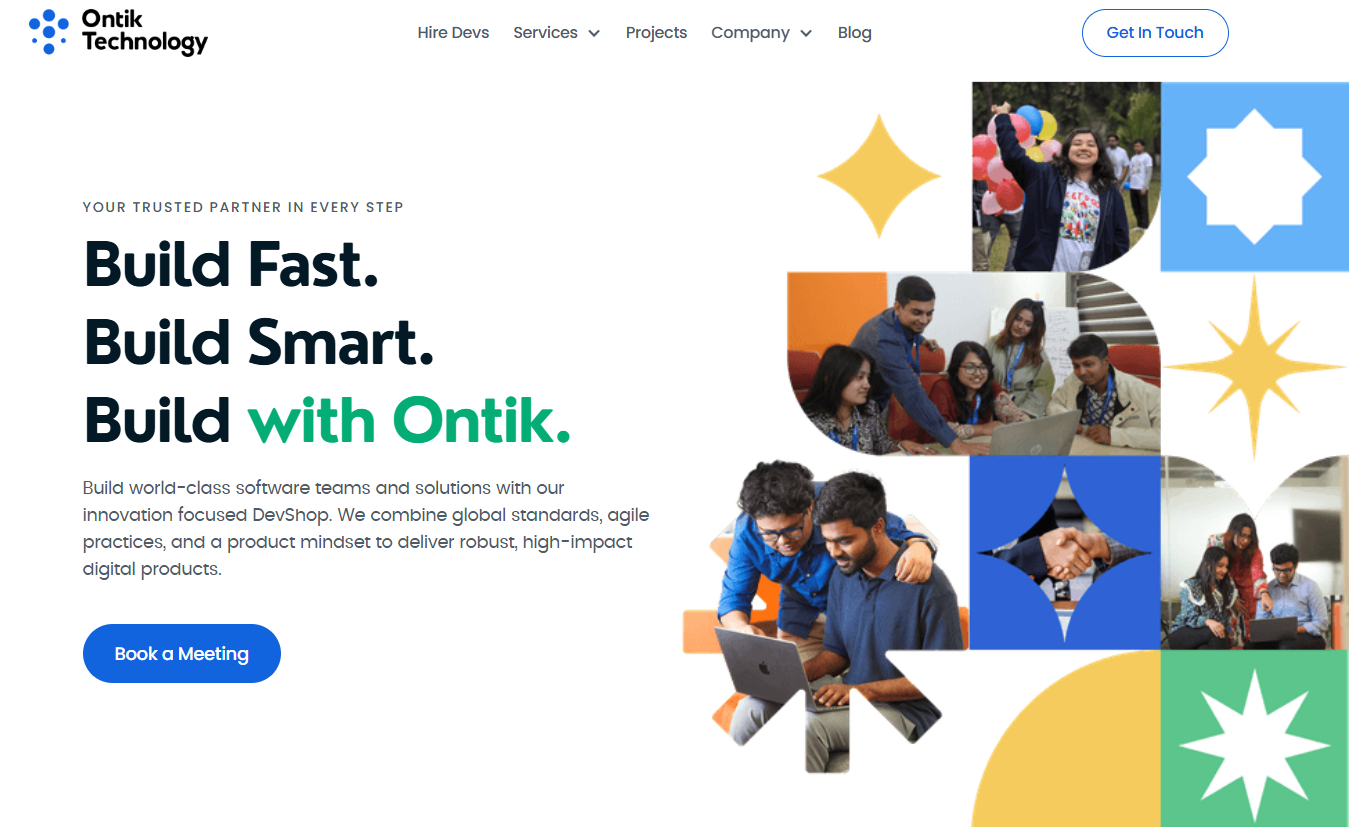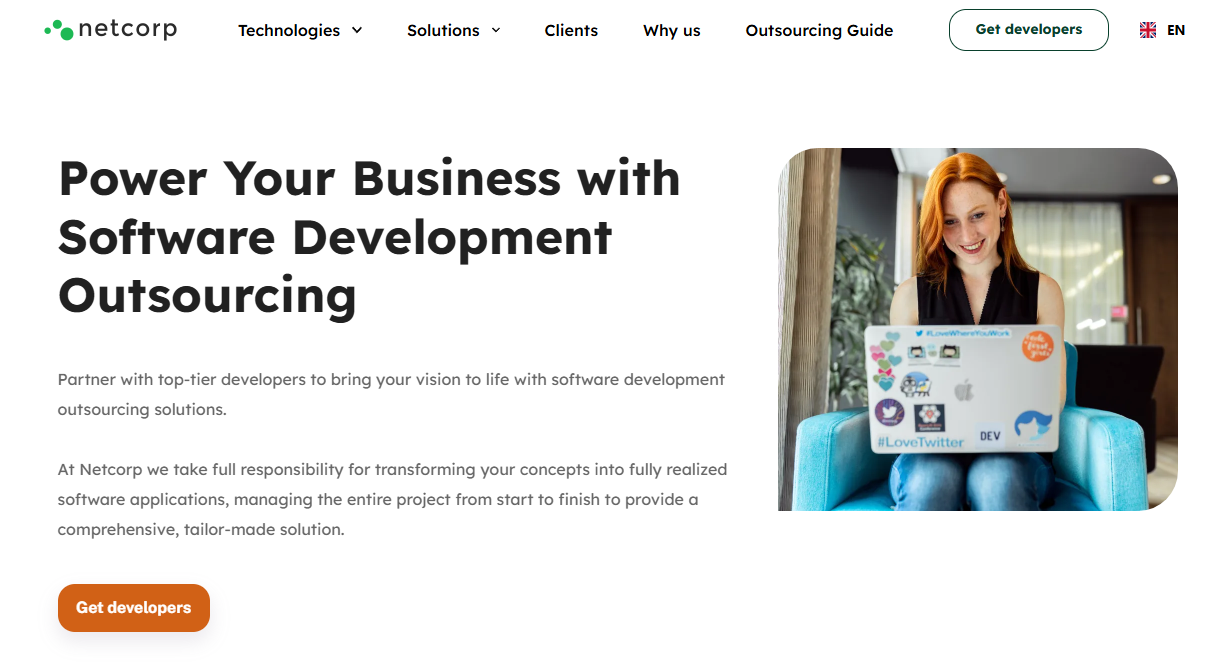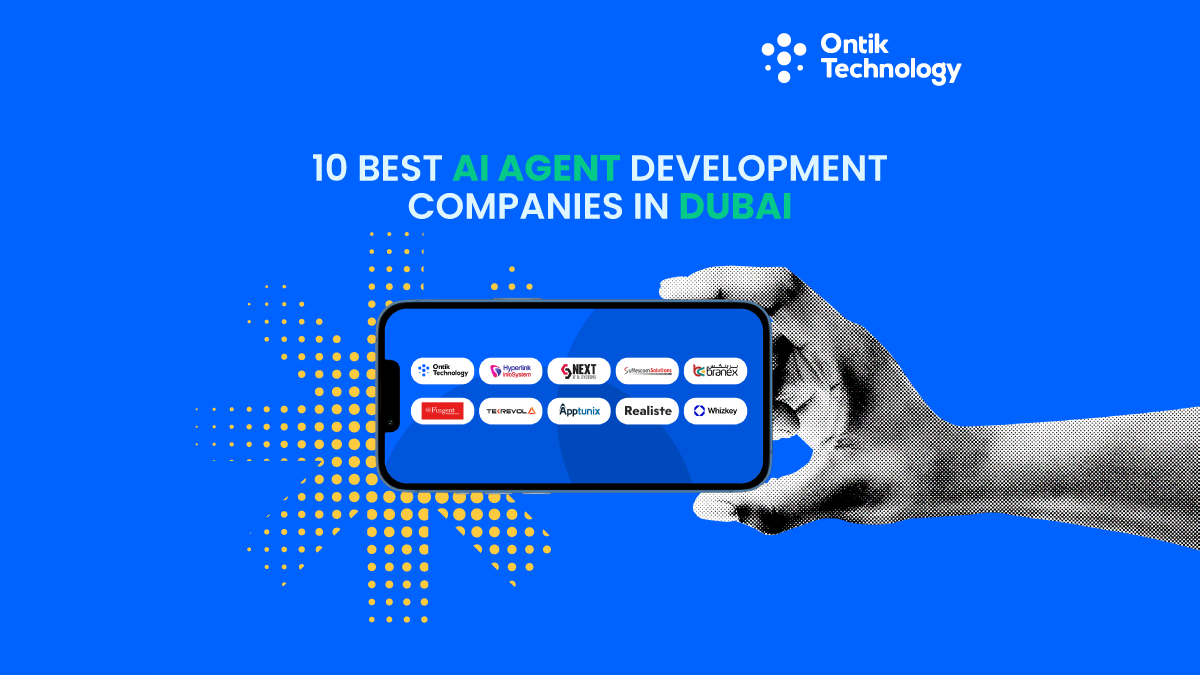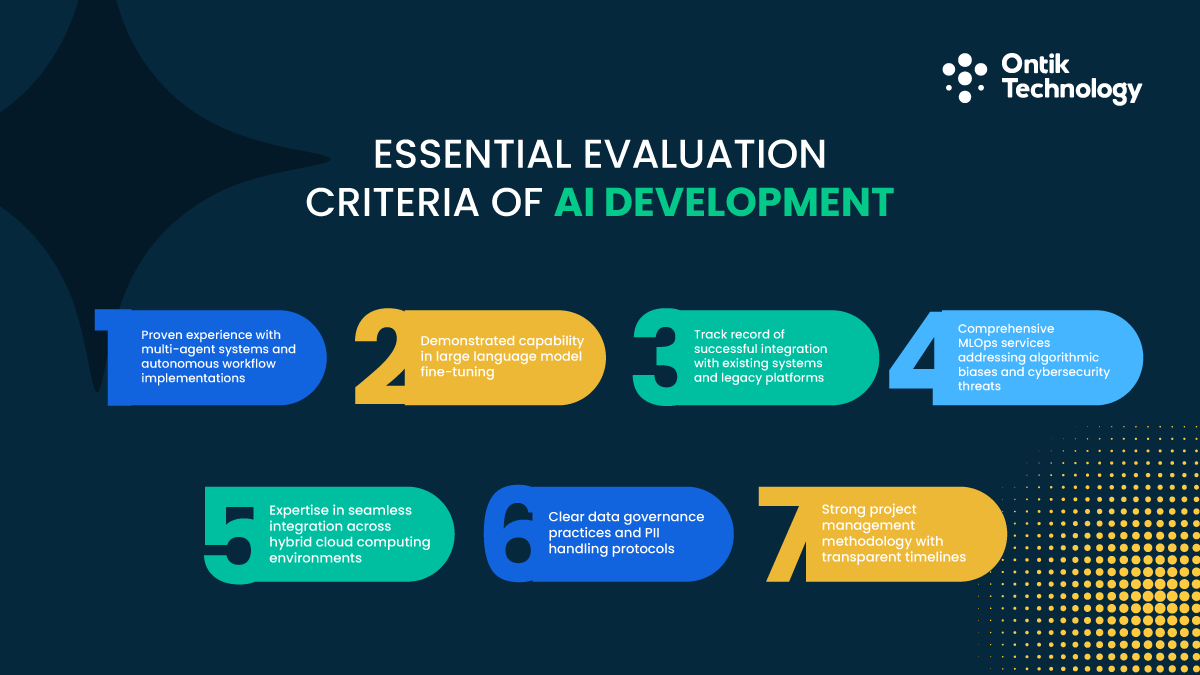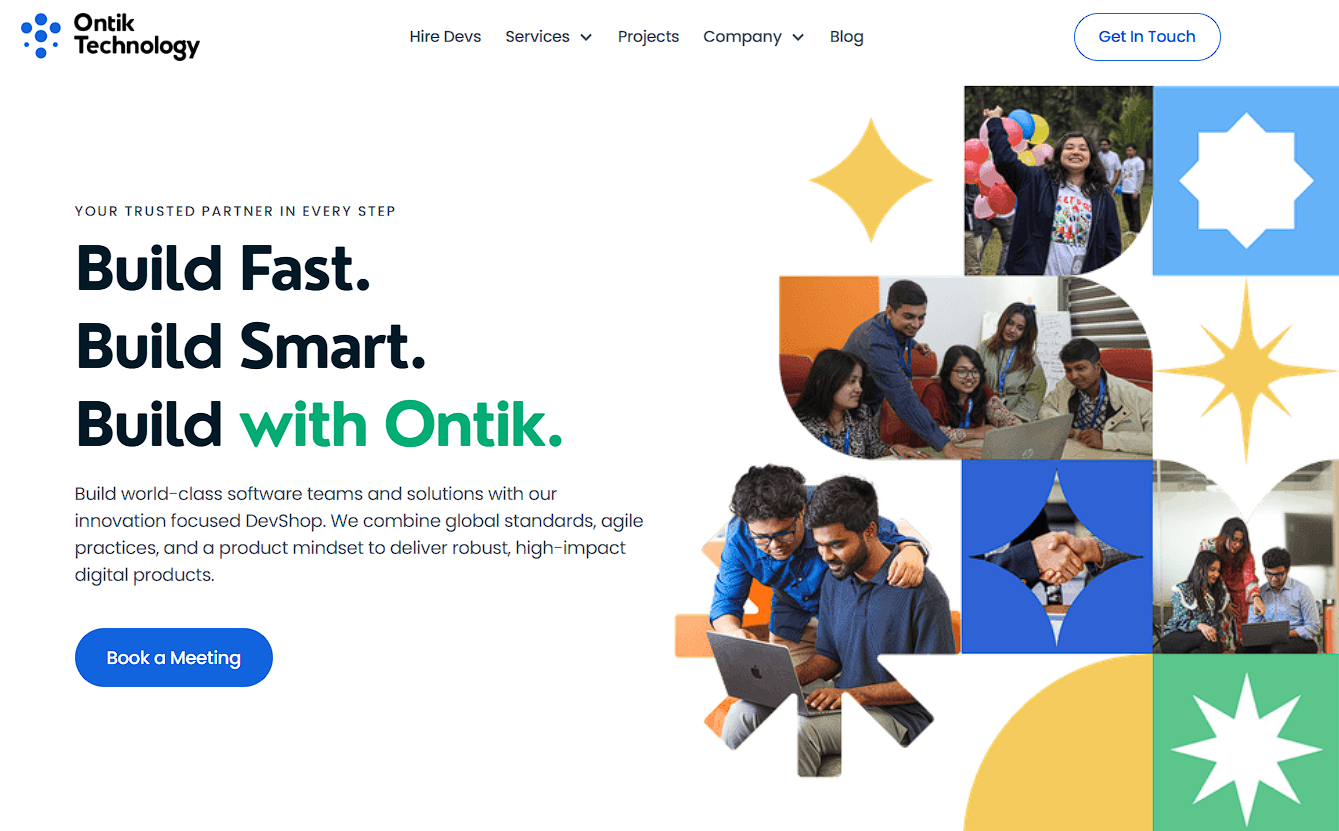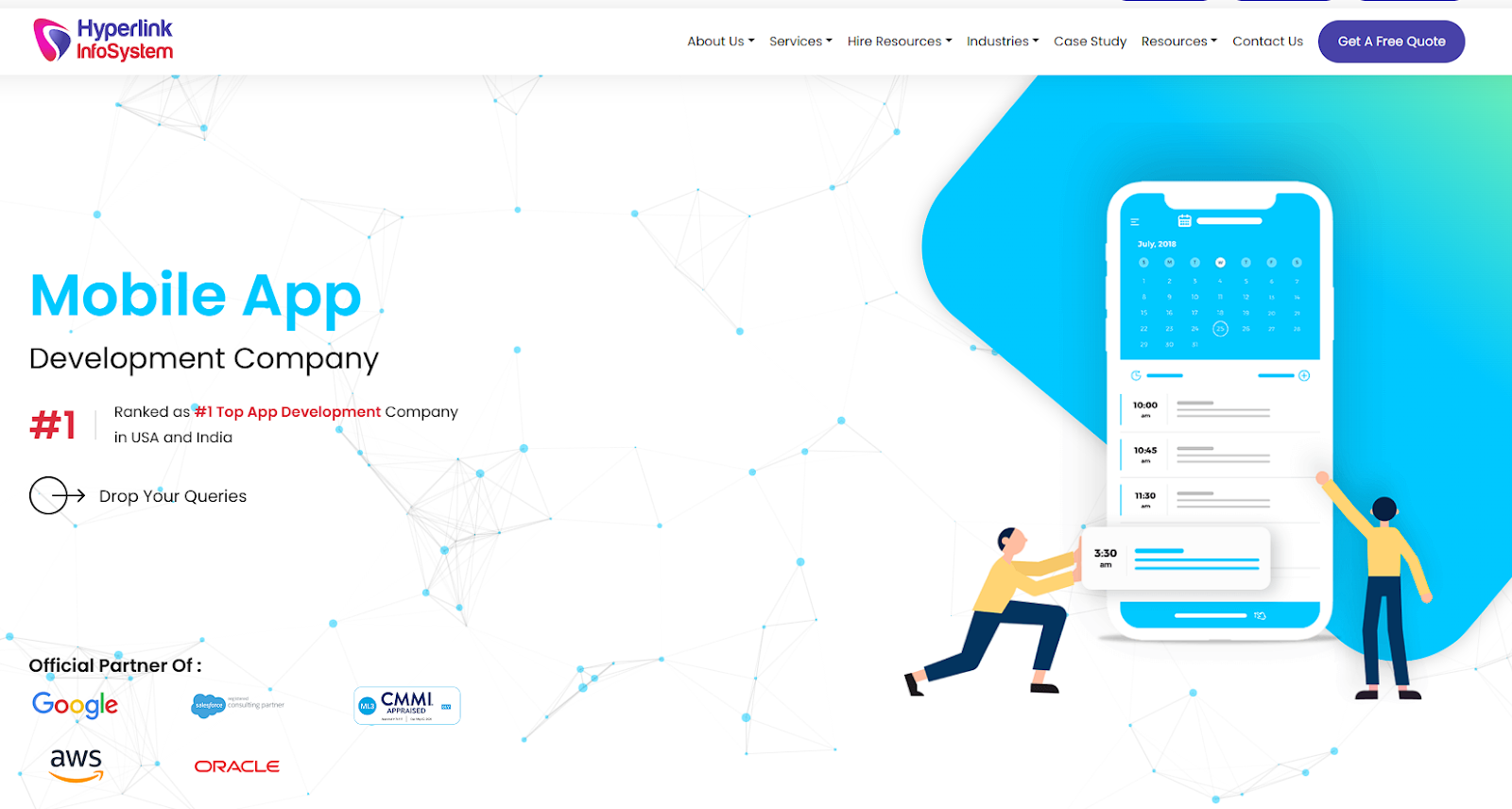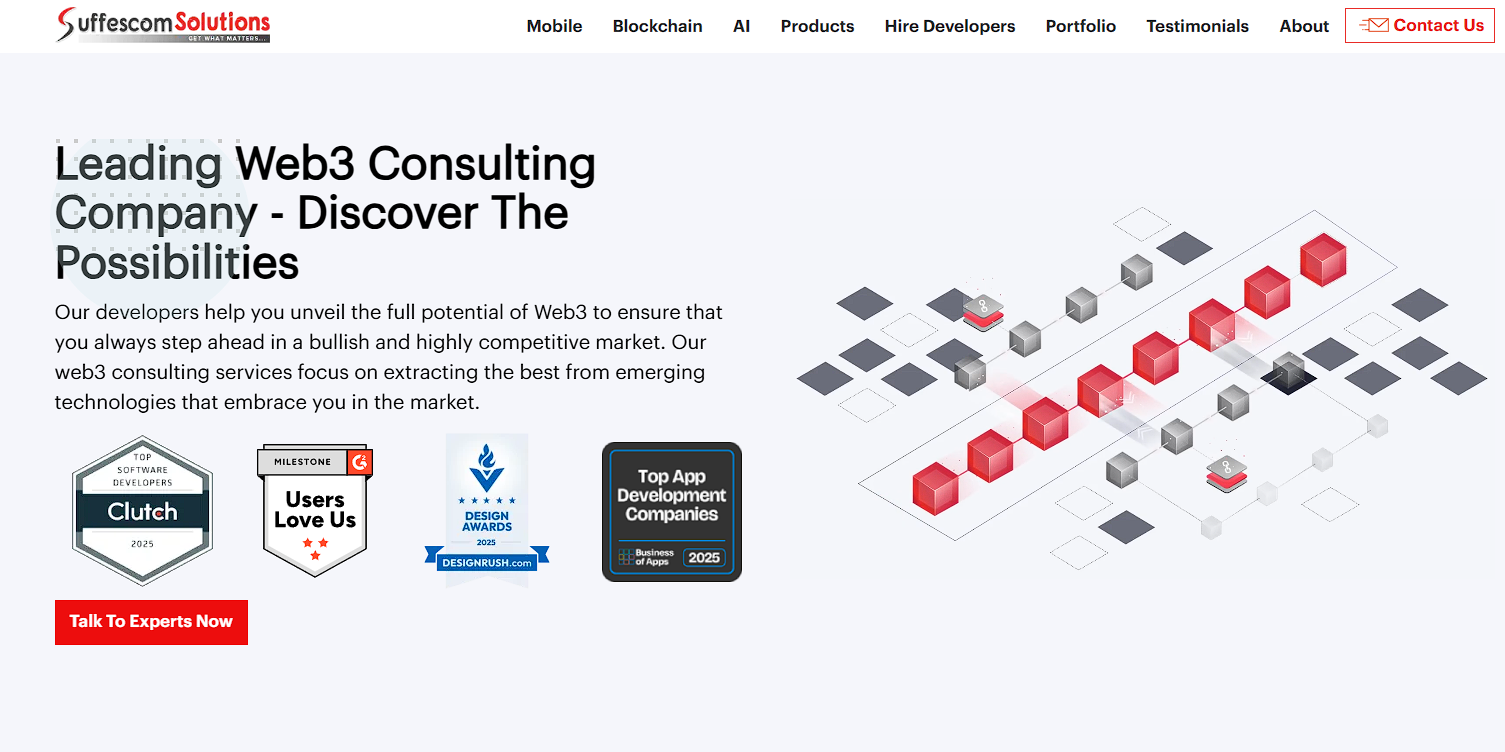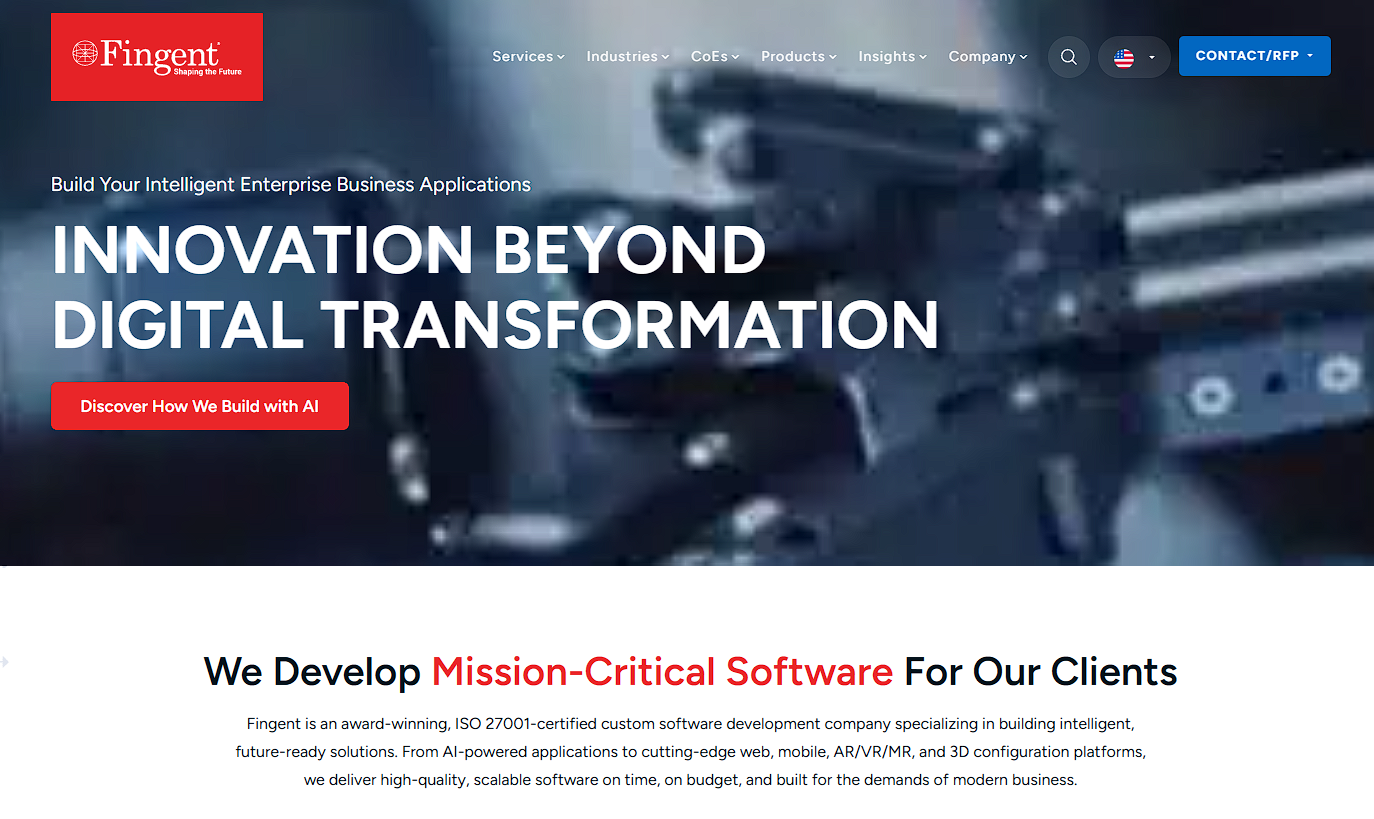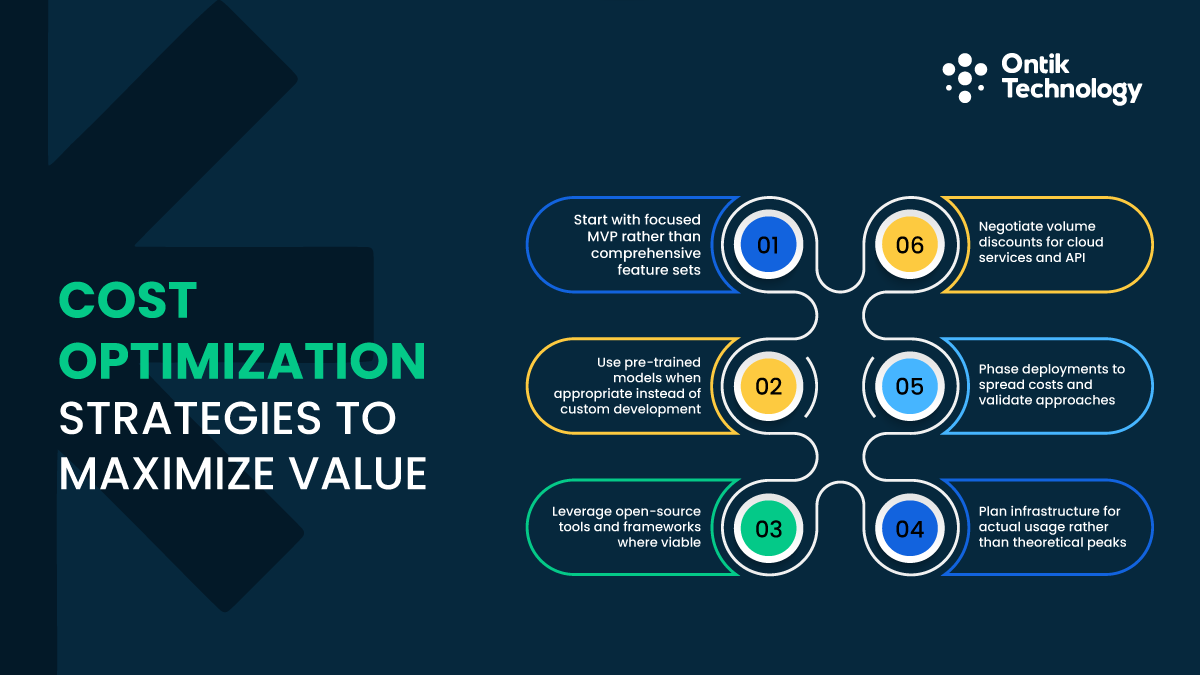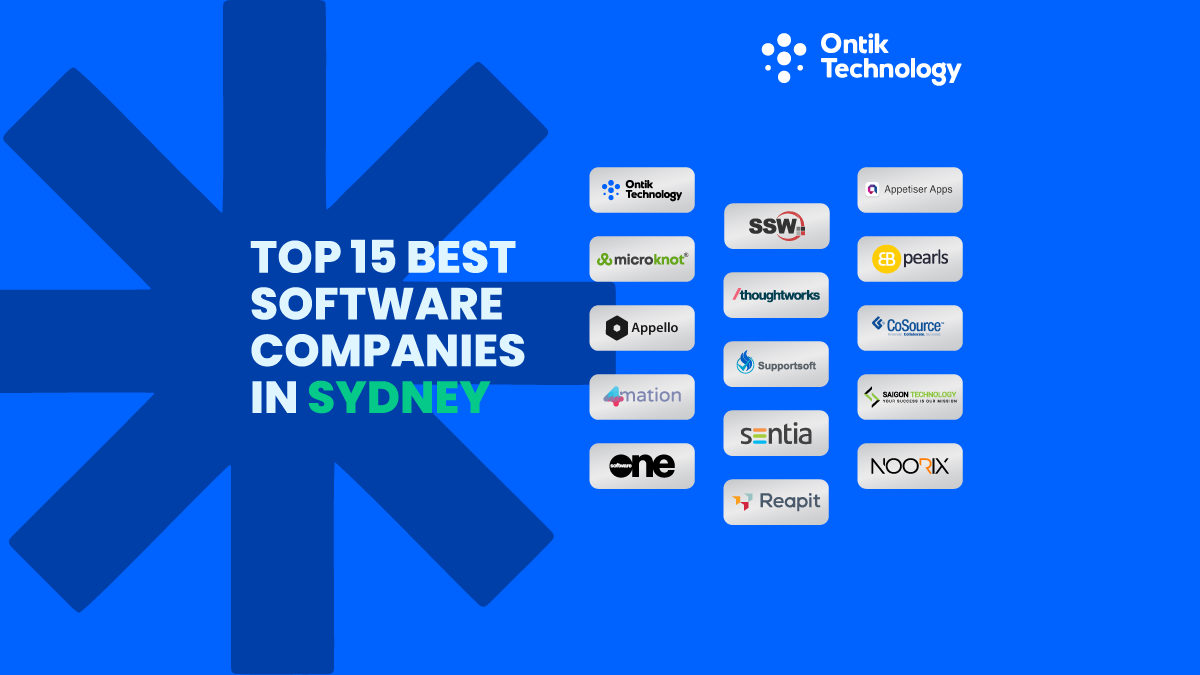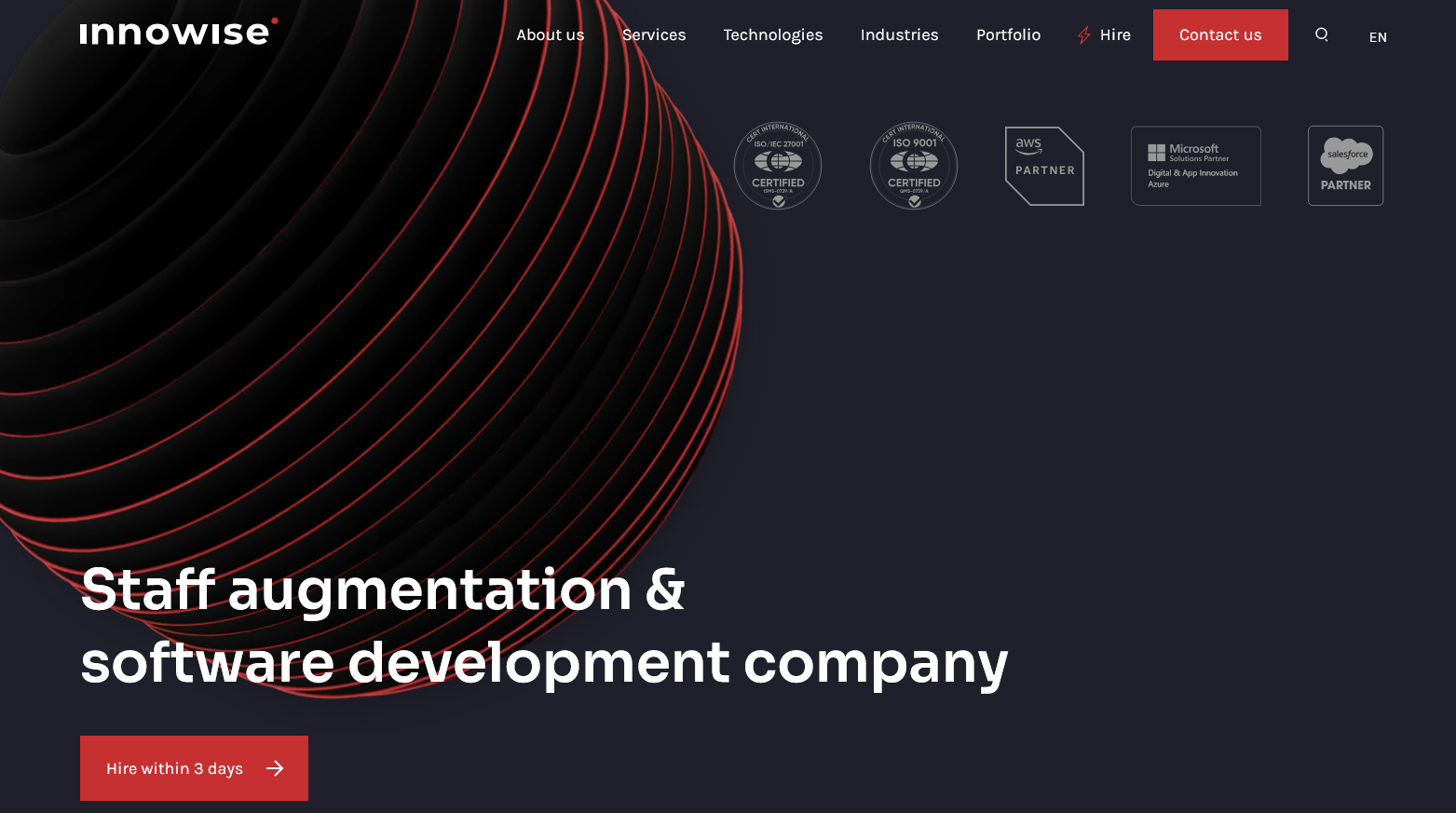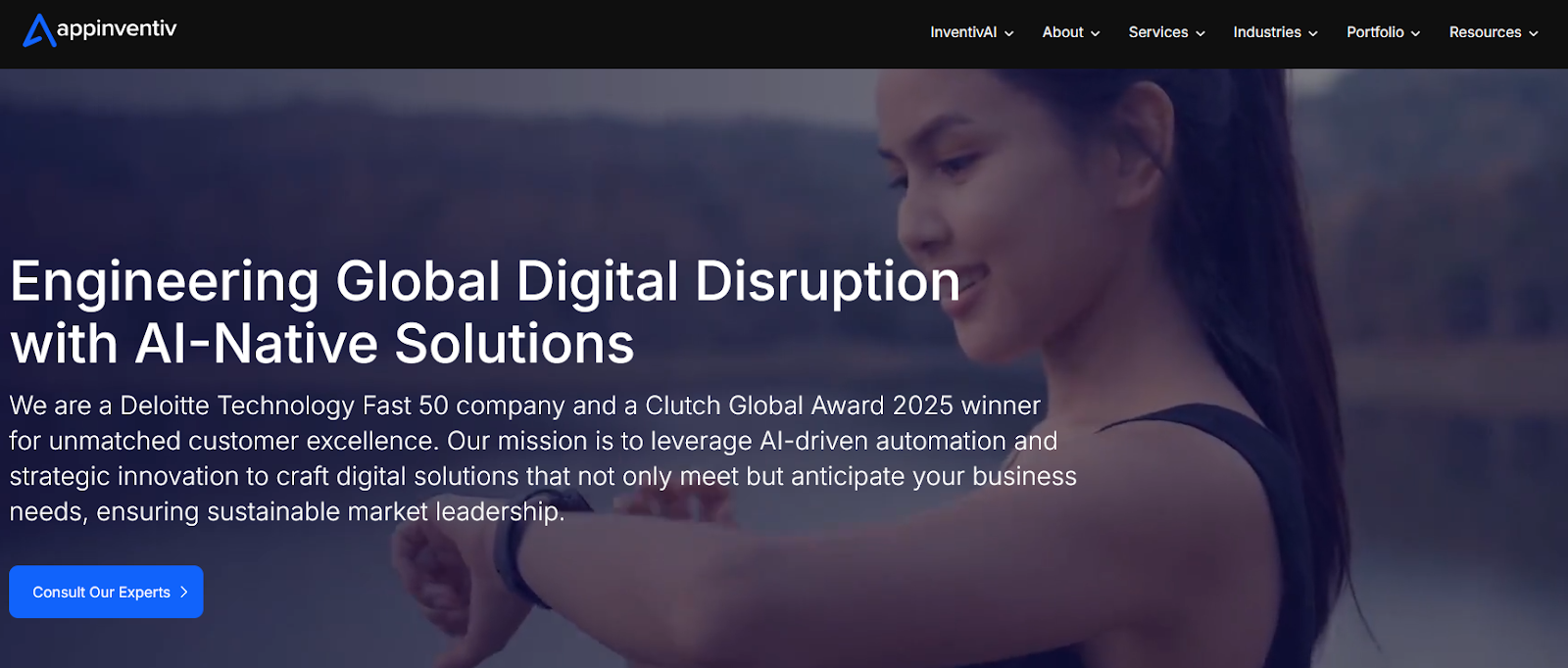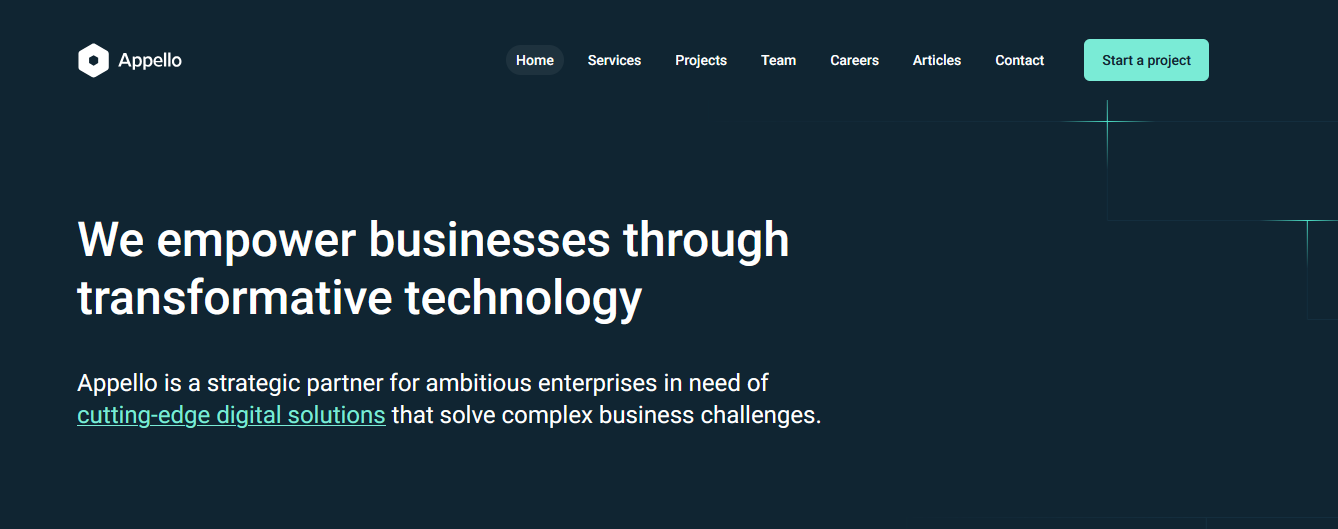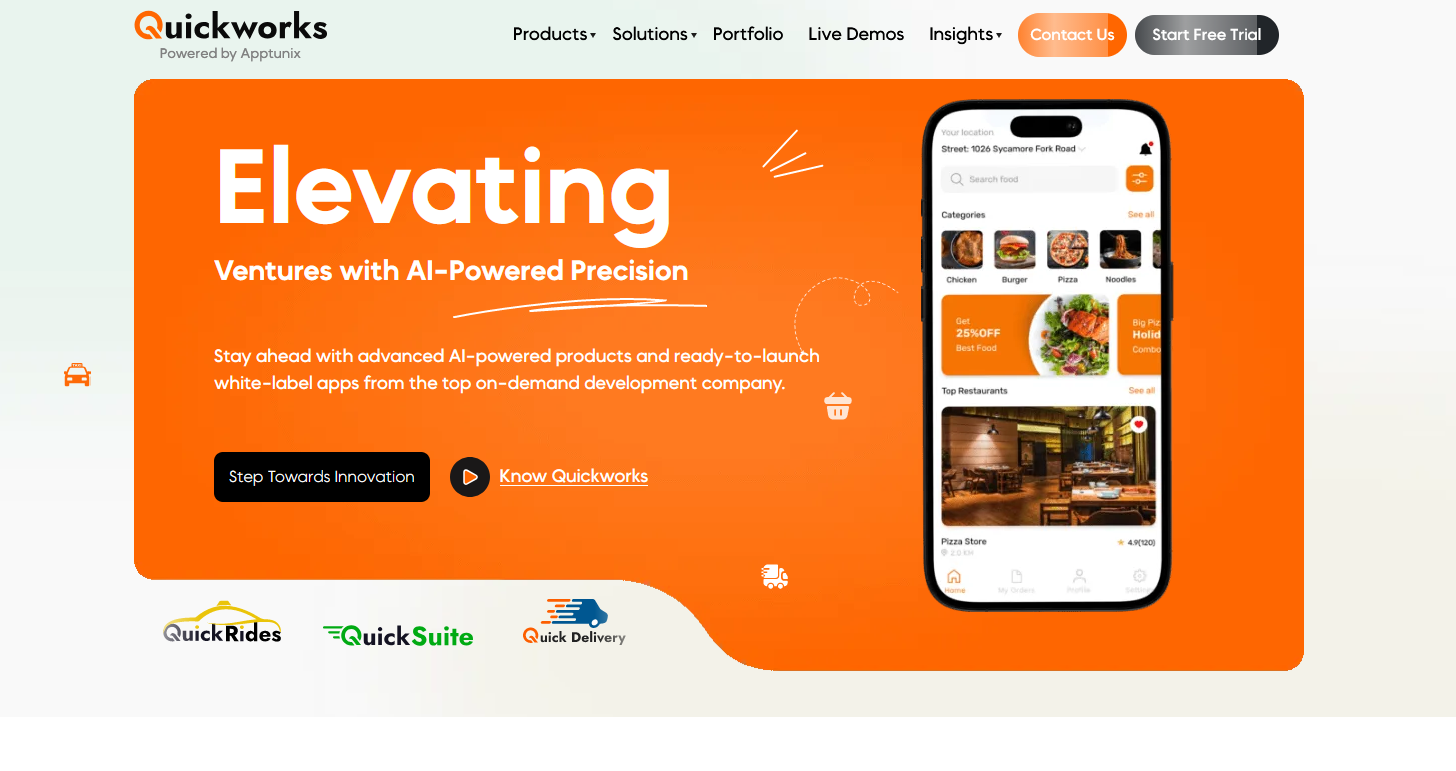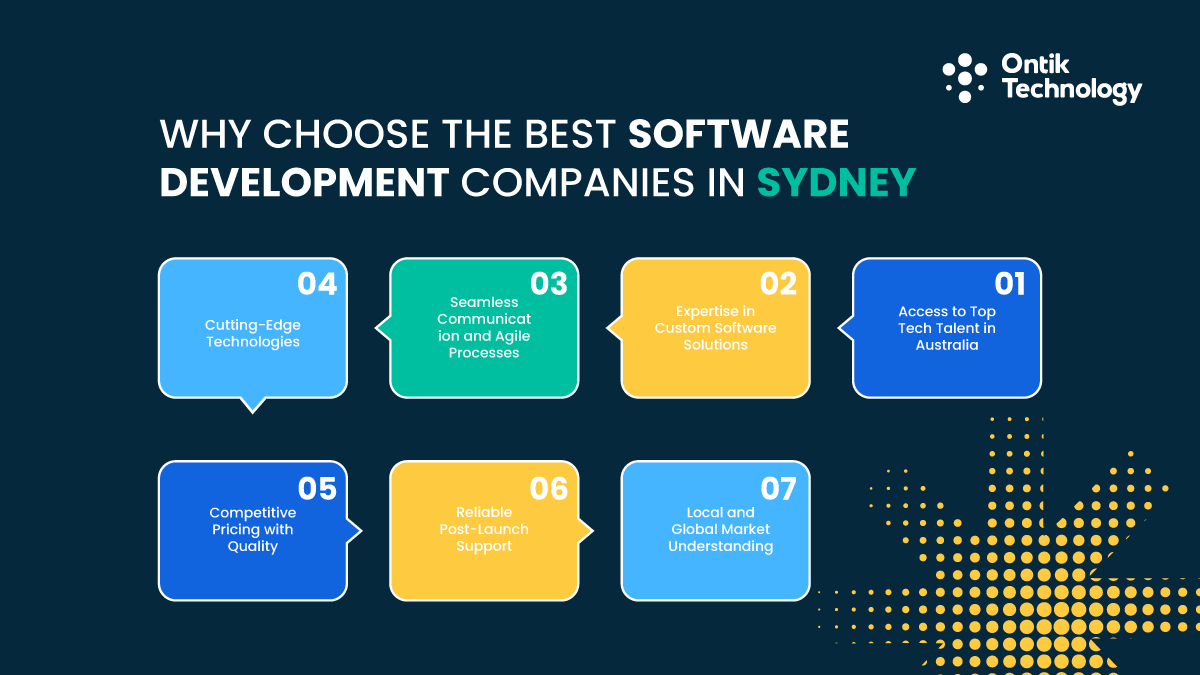Scale Your Business With Rapid Application Development (RAD)
If your business or startup is working on an innovative project with tight deadlines or constantly changing requirements, RAD allows you to stay ahead of the curve to deliver a working product. This methodology is designed to adapt to new information and user needs quickly, ensuring your software remains relevant in a fast-evolving market. With the right tools and team, adopting RAD can boost innovation and drive success, no matter the size of your company.
Rapid Application Development (RAD) is a game-changing approach to software development that focuses on speed, adaptability, and user input to create high-quality applications faster than traditional methods like the Waterfall model. Rather than following a strict, step-by-step process, RAD uses iterative prototyping and involves users at every stage. This makes it highly flexible and efficient, allowing businesses to keep up with changing project requirements and meet tight deadlines.
In today’s fast-moving digital world, where agility can determine a project's success, RAD offers an effective solution for companies aiming to speed up their software development process. It emphasizes building early prototypes and making real-time adjustments based on user feedback. This means you can see results faster and ensure the final product aligns closely with your business needs. By focusing on rapid iterations and ongoing user engagement, RAD helps companies deliver better products while cutting down on development time.
What Is Rapid Application Development?
Rapid Application Development (RAD) is a dynamic software development methodology designed to deliver applications faster and with greater flexibility than traditional methods. Unlike older, rigid processes such as the Waterfall model, RAD prioritizes speed and user feedback. It relies on iterative cycles of prototype development, where user input is integrated throughout the process, allowing developers to refine the product in real time. By focusing on building working versions of the software early, RAD ensures that developers can adapt to changes quickly, providing higher-quality software in less time. This approach is particularly suited for projects where requirements may evolve during the development process.
History of RAD (Rapid Application Development Model)
The concept of Rapid Application Development was pioneered in the 1980s by James Martin, a British computer scientist. At the time, businesses were frustrated with the slow, linear development cycles of traditional methods like the Waterfall model, which often took months—or even years—to deliver a final product. Martin’s RAD approach revolutionized this by focusing on prototyping and user involvement from the outset.
The RAD methodology was heavily influenced by the increasing demand for quicker software solutions in the rapidly evolving tech landscape of the 1980s and 1990s. By emphasizing speed, flexibility, and regular user feedback, RAD became a foundation for many modern software development practices. Today, RAD's core principles influence widely used frameworks like Agile and Scrum, which also prioritize rapid iteration and collaboration.
Phases of Rapid Application Development Model
The RAD or Rapid Application development model breaks down the development process into distinct phases, each crucial for ensuring the software meets business needs efficiently and effectively.
1. Business Modeling
The first phase of RAD is Business Modeling, where the development team works closely with stakeholders to understand the organization’s business objectives. This involves identifying key business processes, determining the flow of information between different functions, and outlining the essential business rules the software must adhere to. This phase sets the foundation for the entire project, ensuring that everyone involved has a clear understanding of the business requirements.
In this phase, questions like "What problems is this software solving?" or "How does this process currently work?" are answered, laying a roadmap for how the system will operate.
2. Data Modeling
After clearly defining business processes, the next step is Data Modeling in the development phase. This involves identifying the data needed to support the business model and structuring it in a way that will be most efficient for the software. Developers and database specialists collaborate to define the data objects and the relationships between them, ensuring that data flows smoothly through the system.
In this phase, critical elements like customer records, transaction data, and inventory information are modeled to ensure the system processes this data effectively.
3. Process Modeling
In the Process Modeling phase, the focus shifts from the "what" to the "how." Developers use the data models created in the previous phase to design the system's workflows and processes. Essentially, this phase translates business objectives and data into actionable steps for the software to perform.
This phase involves breaking down complex workflows into simpler, manageable steps. For example, if the software is meant to handle customer orders, the process model would outline every step from order placement to fulfillment, ensuring that data moves through the system smoothly.
4. Application Generation
The Application Generation phase is where the actual coding and software development takes place. In RAD, this is done using rapid tools such as pre-built software components, code generators, and reusable modules. By using these resources, developers can significantly speed up the coding process. The use of prototypes during this phase allows for constant feedback from users, ensuring the application meets their needs at every stage.
At this stage, the software is built incrementally, and prototypes are adjusted based on feedback. This iterative approach ensures that by the time the final product is ready, it closely aligns with user expectations.
5. Testing and Turnover
Unlike traditional models where testing occurs at the end, RAD integrates Testing and Turnover throughout the development process. Each prototype is tested thoroughly to ensure that the system is functioning as intended. Since testing happens continuously, issues are identified and resolved quickly, often within the same development cycle.
This phase reduces the risk of costly errors being found at the final stages of development, as bugs are fixed early on. After final testing, the system is rolled out to users, ensuring a smooth transition and minimal disruptions.
Characteristics of Agile Software Development
Agile software development is a popular approach that focuses on delivering high-quality software through flexibility, collaboration, and continuous improvement. By breaking projects into small, manageable cycles called sprints, Agile teams can respond to changes quickly and ensure that the end product meets customer needs. Below are some key characteristics that define Agile software development:
1. Customer Collaboration
Agile puts the customer at the center of the development process. Teams work closely with customers, gathering their feedback at every stage of the project. This helps ensure that the product being developed aligns with what the customer actually wants and needs, rather than assumptions made at the start. The collaboration is ongoing, meaning customers are involved in decision-making, prioritizing features, and giving input on prototypes. This approach reduces the risk of delivering a product that doesn’t meet expectations.
2. Iterative Development
Instead of delivering the entire project at the end, Agile teams release small, working versions of the software throughout the development cycle. These are known as iterations or sprints. Each sprint lasts between two and four weeks, allowing the team to build, test, and improve parts of the software quickly. At the end of each sprint, the team delivers a working version of the product, allowing them to get immediate feedback and adjust before moving on to the next stage. This constant iteration helps avoid major setbacks or errors at the final delivery stage.
3. Flexibility and Adaptability
One of the biggest strengths of Agile is its ability to embrace change. Whether new business needs arise or customer feedback suggests changes, Agile teams can quickly adjust their plans. This flexibility is crucial in today’s fast-moving technology world, where requirements often shift mid-project. Agile doesn't treat changes as disruptions but as opportunities to make the product better. This adaptability helps teams stay relevant and ensures that the final product is up-to-date with the latest requirements.
4. Frequent Delivery of Software
In Agile, the goal is to deliver working software frequently, sometimes every few weeks. By breaking the project into smaller, deliverable parts, teams can launch features or updates sooner. This ensures that customers and stakeholders can see progress regularly, rather than waiting months for the final product. Frequent delivery also allows teams to focus on the highest-priority features first, ensuring that the most important aspects of the software are completed and available for use early.
5. Continuous Improvement
Agile encourages a culture of continuous improvement. After each sprint, the team conducts a “retrospective” to reflect on what worked well and what didn’t. This review helps identify areas for improvement and allows the team to refine their processes for the next sprint. Over time, these small adjustments can significantly improve the team’s efficiency, communication, and product quality. The focus on learning and growth makes Agile teams more effective and better equipped to handle challenges.
6. Cross-Functional Teams
Agile relies on cross-functional teams where people with different skill sets, like developers, designers, and testers, work together throughout the project. Instead of waiting for one department to finish before another can start, everyone collaborates simultaneously, speeding up the process and fostering creativity. Cross-functional teams ensure that each phase of development, from design to testing, is considered from the very beginning, leading to fewer bottlenecks and a smoother development flow.
7. Self-Organizing Teams
Agile teams are self-organizing, meaning they have the autonomy to decide how to accomplish their work. This encourages ownership, accountability, and creativity among team members. By allowing teams to make their own decisions, Agile fosters an environment where individuals feel empowered and motivated to find the best solutions. This structure leads to higher productivity, as team members take responsibility for their work and push themselves to achieve the best results.
8. Emphasis on Face-to-Face Communication
Communication is critical in Agile. While remote communication tools are often used, Agile encourages direct, face-to-face communication whenever possible. This allows for faster decision-making, a clearer understanding of requirements, and stronger collaboration between team members. Daily meetings, known as "stand-ups," help teams stay aligned and quickly address any issues that arise. The focus on open, real-time communication ensures that everyone is on the same page, reducing misunderstandings and delays.
9. Simplicity in Design and Development
Agile values simplicity, focusing on building only what is necessary to meet the current needs. This avoids wasting time on overly complicated features that may not even be used. By prioritizing simplicity, Agile teams can quickly adapt to changes and add new features as needed without being weighed down by unnecessary complexity. This principle helps teams work more efficiently and deliver usable software faster.
10. Test-Driven Development
In Agile, testing is not an afterthought but a continuous process that happens throughout development. Teams use test-driven development (TDD), where they write tests before writing the actual code. This approach ensures that the software is built correctly from the beginning and reduces the likelihood of bugs appearing later on. Continuous testing improves the quality of the software and helps teams catch issues early, saving time and effort in the long run.
11. Sustainable Development Pace
Agile teams aim for a steady and sustainable work pace, often referred to as maintaining a "sustainable velocity." Rather than working long hours at the end of the project to meet a deadline, teams work consistently throughout the project, avoiding burnout. This focus on sustainability ensures that the team can maintain productivity over time without sacrificing quality.
12. Focus on Working Software Over Documentation
Agile prioritizes working software over extensive documentation. While documentation is still important, the emphasis is on delivering a functional product. Instead of spending excessive time on upfront documentation, Agile teams focus on creating working software that can be tested and used as early as possible. This approach ensures that development time is spent on building the actual product rather than creating documents that may become outdated quickly.
In both RAD and Agile, the emphasis is on delivering working software in shorter timeframes while ensuring that it meets the changing needs of users and businesses. The methodologies both highlight the importance of user feedback and adaptability in creating successful software. However, Agile's formalized approach has made it more widely used in today’s fast-paced tech environment.
Benefits of Agile Software Development Models
Agile software development has become a go-to approach for many businesses because of its flexibility, speed, and focus on delivering high-quality products. Below are some key benefits of adopting Agile for software projects:
1. Faster Time to Market
Agile breaks down projects into small, manageable pieces, allowing teams to deliver working software in short cycles, typically every two to four weeks. This means that the most important features are developed and launched earlier, giving businesses a faster time to market. By getting products to users quickly, companies can gain a competitive edge and start receiving valuable customer feedback right away.
2. Better Collaboration
In Agile, communication and teamwork are essential. Teams work closely with customers, stakeholders, and each other throughout the entire project. Regular meetings, such as daily stand-ups and sprint reviews, keep everyone aligned and ensure any issues are addressed early. This constant collaboration leads to a deeper understanding of the project requirements and helps teams make smarter decisions.
3. Improved Flexibility and Adaptability
Agile is built to handle change. In today’s fast-moving business world, customer needs or market conditions can shift quickly, and Agile allows teams to adjust their plans without disrupting the entire project. This adaptability is one of Agile’s biggest strengths, as it enables businesses to stay relevant and responsive to new demands or feedback.
4. Higher Quality Products
With Agile, quality is a top priority. Since testing happens continuously throughout the development process, teams can catch and fix bugs early. This reduces the risk of major issues cropping up later in the project. Regular customer feedback also ensures that the software is built with the end user’s needs in mind, leading to a better, more polished final product.
5. Increased Customer Satisfaction
Agile puts customers at the heart of the development process. By involving them in decision-making and regularly gathering their input, businesses ensure the product meets or exceeds customer expectations. Delivering working software frequently also keeps customers engaged, as they can see the progress firsthand and provide timely feedback.
6. Reduced Risk
Agile reduces the risk of project failure by focusing on small, iterative releases. Each sprint ends with a working piece of software, so even if a project doesn’t go as planned, there is still a usable product at the end of every iteration. This minimizes the risk of major setbacks, as teams can continuously assess progress and make adjustments as needed.
7. Better Project Control
Agile gives project managers and stakeholders greater control throughout the development process. With daily meetings, regular updates, and clear visibility into the progress of each sprint, everyone involved has a better understanding of the project’s status. This transparency helps prevent delays and ensures that resources are used efficiently.
8. Empowered Teams
Agile fosters an environment where teams are empowered to make decisions and take ownership of their work. This increases motivation, creativity, and accountability within the team. As a result, team members are more engaged and invested in the success of the project, which leads to better outcomes for both the team and the business.
Challenges of Working With the RAD Models
While Rapid Application Development (RAD) offers many benefits, such as speed and flexibility, it also presents several challenges. Understanding these challenges can help businesses decide if RAD is the right approach for their project.
1. Not Suitable for Large-Scale Projects
RAD works best for smaller, less complex projects. When applied to large-scale projects, it can become difficult to manage and coordinate all the moving parts. The rapid pace of development in RAD can make it harder to maintain consistency and quality across a bigger project. For larger systems, a more structured approach like Agile or Waterfall may be a better fit.
2. Requires Constant User Involvement
One of RAD’s key principles is frequent user feedback, which means that customers or stakeholders need to be involved throughout the entire development process. However, not all businesses or users are available or willing to dedicate the time and resources needed for such ongoing collaboration. If user involvement is inconsistent, the final product may not meet expectations, or the process may be delayed.
3. High Dependency on Skilled Developers
RAD’s fast-paced, iterative nature requires a highly skilled development team capable of working efficiently and adapting to feedback quickly. If the team lacks experience or technical expertise, the project could face delays or result in a lower-quality product. Having the right mix of experienced developers, testers, and designers is critical for success with RAD.
4. Difficult to Estimate Costs and Timelines
In RAD, requirements and designs are constantly evolving, making it challenging to provide accurate cost and time estimates. Without a clearly defined scope from the beginning, project costs may increase as changes are implemented throughout the development process. This unpredictability can be a concern for businesses working with strict budgets or tight deadlines.
5. Potential for Scope Creep
Since RAD encourages flexibility and frequent changes, there is a higher risk of scope creep—when additional features or requirements are added without proper planning or approval. If scope creep is not managed carefully, it can lead to delays, increased costs, and a final product that is more complex than necessary. Clear communication and project management are essential to prevent this issue.
6. Limited Documentation
RAD focuses on speed and working prototypes, which often leads to less formal documentation compared to traditional methods like Waterfall. While this speeds up the development process, it can also create problems later on if team members leave, or if the product needs further updates or maintenance. Without detailed documentation, it may be difficult for new developers to understand the system or for future teams to make changes efficiently.
7. Testing Can Be Overlooked
Testing may take a back seat in the rush to develop and deliver working prototypes quickly. If thorough testing is not conducted regularly, there is a risk that bugs or defects will be discovered later in the process, requiring costly fixes. Maintaining a balance between rapid development and comprehensive testing is essential to ensure product quality.
8. May Not Work for All Industries
RAD is most effective for projects with flexible requirements and frequent user feedback. However, industries that require strict regulatory compliance, like healthcare or finance, may find RAD’s loose structure challenging. These industries often require detailed documentation, thorough testing, and long-term planning, which are not the focus of RAD. In such cases, more structured approaches like Agile or Waterfall might be better suited.
SDLC vs RAD vs Agile vs DevOps: Comprehensive Comparison of Software Development Methodologies
When Is Rapid Application Development (RAD Method) The Best Choice?
Rapid Application Development (RAD) is ideal when you need to build a software application quickly, with frequent user feedback and the flexibility to make changes throughout the process. Here are the situations where RAD shines:
1. Short Deadlines
When a project has tight deadlines and there’s little time to spend on lengthy development cycles, RAD is the best choice. Traditional models like Waterfall can be too slow and rigid, but RAD speeds up the process by creating prototypes early on. This way, users can give feedback, and developers can adjust without wasting time on complete reworks.
2. Changing Requirements
If your project is likely to experience frequent changes or evolving requirements, RAD offers the flexibility you need. This method thrives in dynamic environments where user needs might shift. With RAD, you can keep refining the project as you go, ensuring the end product aligns closely with the client’s vision.
3. Close User Involvement
RAD is perfect for projects where active user involvement is essential. Because users are part of every stage in development, they can share their feedback constantly. This reduces the risk of misunderstandings and ensures the final product matches user expectations.
4. Prototype-Driven Projects
When the final product needs to be visually understood or tested before completion, RAD allows for the development of working prototypes early in the process. These prototypes help both developers and stakeholders see what’s working and what needs improvement, without waiting for the full application to be built.
Top Rapid Application Development Tools
If you’re planning to use RAD, having the right tools makes all the difference. Here are some of the best RAD tools available today that simplify the process and boost productivity:
1. OutSystems
OutSystems is a powerful RAD platform that offers a low-code development environment. It allows you to build scalable applications quickly, with built-in templates and drag-and-drop features that minimize manual coding. It’s particularly useful for enterprise-level projects.
2. Kissflow
Kissflow’s RAD tool is designed for teams that want to automate and streamline their development workflows. It provides a platform to create, test, and deploy applications quickly, while also integrating real-time user feedback for adjustments along the way.
3. Zoho Creator
Zoho Creator offers an intuitive platform for building custom applications without deep coding knowledge. Its user-friendly interface and pre-built templates make it easy for businesses to adopt RAD principles and deliver solutions faster.
4. Mendix
Mendix is another low-code platform that excels in speed and flexibility. It supports rapid prototyping and allows for collaborative development, making it a great tool for teams working with RAD to develop and iterate on their applications.
5. Appian
Appian combines low-code development with powerful automation features, which allows businesses to rapidly deploy enterprise applications. Its focus on workflow automation and user-centric design fits perfectly with the principles of RAD.
How To Make The Most Out Of Your Rapid Application Development life-cycle
If you’ve chosen the RAD approach for your project, here’s how you can maximize its potential:
1. Start with Clear Objectives
Before jumping into development, make sure your team understands the key objectives of the project. While RAD is flexible, having a clear vision ensures everyone is on the same page and development stays focused on delivering the best solution.
2. Build a Strong Team
RAD works best when developers, users, and stakeholders work closely together. Having a strong, collaborative team ensures feedback is continuous and integrated seamlessly into the development process.
3. Leverage Prototyping
The core of RAD lies in iterative prototyping. Don’t wait until the end to show progress—start building prototypes early and often. This gives users a tangible way to see how the project is evolving and makes it easier to identify what needs improvement.
4. Incorporate Continuous User Feedback
One of the biggest advantages of RAD is the continuous feedback loop. Don’t wait until the project is nearing completion to get input from users. Instead, make feedback a regular part of the process at every stage of development.
5. Stay Adaptable
RAD’s strength is its ability to adapt to changes. Embrace this flexibility and encourage your team to be open to user feedback and shifts in project scope. This will help you stay agile and avoid costly delays or reworks later.
How Ontik Technology Can Help With Rapid Application Development Process (RAD)
At Ontik Technology, we specialize in helping businesses achieve their goals using Rapid Application Development. Our experienced team of developers and project managers understands the unique challenges and opportunities RAD presents. Here’s how we can support your business and scale your business to the next level :
1. Expertise in Low-Code/No-Code Platforms
Our team has deep experience with leading RAD tools like OutSystems, Mendix, and Zoho Creator. We can help you select the right platform based on your specific project needs, ensuring rapid development without sacrificing quality. We have our bubble developers who can make your project without using any code through the bubble.
2. Seamless Collaboration
We prioritize communication and collaboration throughout the project. By keeping you involved in every stage of the development process, we ensure that the final product aligns perfectly with your expectations.
3. Prototyping and User Feedback Integration
Our RAD approach focuses on early prototyping and continuous feedback loops, allowing us to refine and adjust the application as needed. This results in a product that’s optimized for both functionality and user experience.
4. Customized Solutions
At Ontik Technology, we know that every business is different. That’s why we tailor our RAD services to meet your unique requirements. Whether you need a small-scale app or an enterprise-level solution, we can deliver high-quality results in a short time frame.
5. Efficient and Cost-Effective
We combine speed with cost efficiency, ensuring that you get a high-quality product without overblown budgets or timelines. By leveraging RAD tools and methodologies, we help you minimize risk and avoid unnecessary costs.
Conclusion
In a world where customer needs and technology are constantly evolving, businesses need to be agile to stay competitive. Rapid Application Development provides the perfect framework for that. By focusing on speed, adaptability, and user involvement, it offers a streamlined path to building software that meets today’s fast-paced market demands. Whether you’re a startup or an established company, RAD helps you innovate faster and respond more effectively to changes, giving you a significant edge in the market.
Embracing RAD means adopting a mindset of continuous improvement. Every iteration brings you closer to a better product, and every piece of user feedback is an opportunity to refine and perfect your solution. This dynamic, flexible approach can drive your business to new heights of success, helping you deliver the right solutions at the right time.
By leveraging RAD’s strengths, businesses can not only meet tight deadlines and evolving needs but also deliver high-quality applications that truly meet user expectations. With the right team and tools, Rapid Application Development can be the key to staying competitive in a rapidly changing world.




